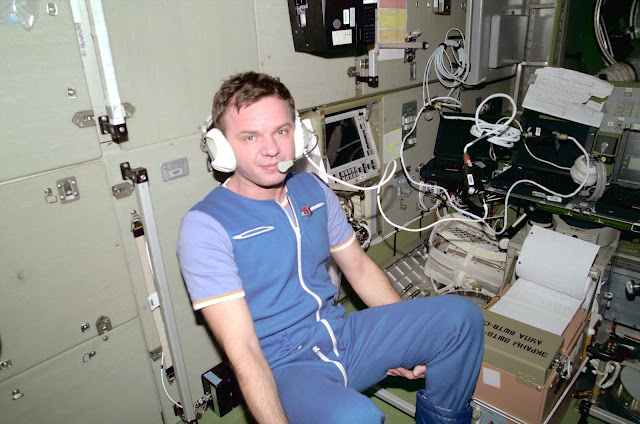ISS - Expedition 1 Mission patch.
Nov. 2, 2021
ISS-1 Crew
Work of the ISS-1 crew on board the station
21 years ago, on November 2, 2000, the International Space Station began operating in manned mode. The Soyuz TM-31 manned transport vehicle with the crew of the first long-term expedition docked to the Zvezda service module. The ISS-1 crew included Russian cosmonauts Yuri Gidzenko, Sergei Krikalev and American astronaut William Shepard.
Work of the ISS-1 crew on board the station
On October 31, 2000, the Soyuz TM-31 spacecraft left for the ISS from the Gagarin Launch, the same launch pad from the Baikonur cosmodrome, from which Yuri Gagarin launched in 1961. On the morning of November 2, the spacecraft docked to the ISS.
Work of the ISS-1 crew on board the station
The spacecraft rendezvous with the station was carried out according to the scheme that was used during flights to the Mir station. 90 minutes after the docking, the hatch was opened, and the ISS-1 Expedition crew stepped on board the ISS for the first time.
Work of the ISS-1 crew on board the station
Arriving at the ISS, the cosmonauts carried out deactivation, retrofitting, launch and adjustment of the systems of the Zvezda, Unity and Zarya modules and established communication with the Mission Control Centers in the cities of Korolev and Houston.
Work of the ISS-1 crew on board the station
Within four months, 143 sessions of geophysical, biomedical and technical research and experiments were performed. In addition, the ISS-1 crew provided docking with the Progress M1-4 cargo vehicles (November 2000), Progress M-44 (February 2001) and the American shuttles Endeavor (December 2000), Atlantis ( February 2001), Discovery (March 2001) and their unloading. In February 2001, the Destiny laboratory module was also integrated into the ISS.
Work of the ISS-1 crew on board the station
On March 21, 2001, with the American space shuttle Discovery, which delivered the crew of the second expedition to the ISS, the team of the first long-term mission returned to Earth. The landing site was the JF Kennedy Space Center, Florida, USA.
Work of the ISS-1 crew on board the station
With the creation of the ISS, it became possible to carry out scientific experiments in the unique conditions of microgravity, in a vacuum and under the influence of cosmic radiation. The main areas of research are biology, physics and materials science.
Work of the ISS-1 crew on board the station
Over the 21 years of operation of long-term missions to the ISS, the station itself has changed, and human knowledge in the fundamental sciences, in the field of practical application of the skills of life and work of people in zero gravity, in conditions of radiation and airless space, has become much deeper.
Work of the ISS-1 crew on board the station
International Space Station (ISS) November 2, 2000
The main result of the ISS is a unique experience of international cooperation, support and mutual assistance; construction and operation in a near-earth orbit of a large engineering structure, which is of paramount importance for the future of all mankind.
Related links:
ROSCOSMOS Press Release: https://www.roscosmos.ru/33208/
Manned space exploration: https://www.roscosmos.ru/tag/pilotiruemaja-kosmonavtika/
ROSCOSMOS - International Space Station (ISS): https://www.roscosmos.ru/tag/mks/
NASA - International Space Station (ISS): https://www.nasa.gov/mission_pages/station/main/index.html
Images, Text, Credits: ROSCOSMOS/NASA/Orbiter.ch Aerospace/Roland Berga.
Best regards, Orbiter.ch



















